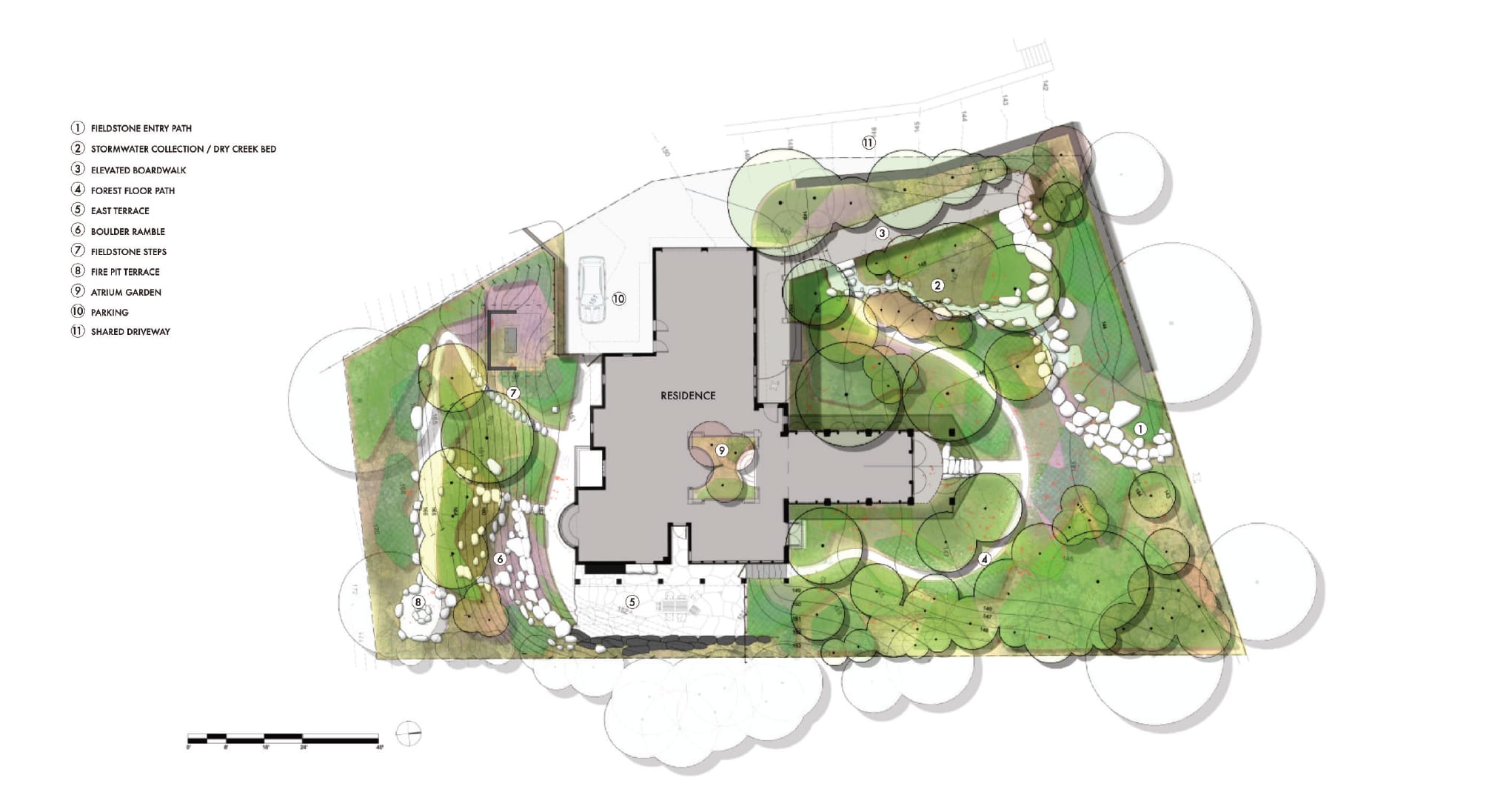In landscape architecture and design, the goal often centers on meeting the client’s vision with carefully selected plants, surfacing, structures, and furnishings. However, as landscape designer Matthew Cunningham emphasizes, a well-rounded design caters to the environment as well as the client’s wishes.
Cunningham, known for his expertise in planting design, shares that plant communities are a crucial component of sustainable site design. Restoring or conserving these communities can support both ecological health and the broader landscape.
As sustainable site design becomes more essential, the benefits of focusing on plant communities are wide-ranging, from aiding in climate resilience to enhancing biodiversity. Plant communities contribute to a larger environmental legacy, establishing an ecological support system that endures beyond any one site.
What Are Plant Communities?
A plant community is a group of plant species that grow together in a particular environment and interact with each other and their surroundings. These communities form naturally based on factors like climate, soil type, water availability, and interactions with animals and microorganisms.
For example, a desert plant community might consist of cacti, succulents, and drought-tolerant shrubs, while a wetland community could include reeds, water lilies, and mosses. Each species in a plant community plays a role — some provide shade, others fix nitrogen in the soil, and some attract pollinators or deter herbivores.
Why Plant Communities Matter in Landscape Design
Understanding and incorporating plant communities can help create more sustainable sites and reverse the ongoing degradation of natural ecosystems. Across North America, increasing droughts, wildfires, storms, and species migrations due to climate change threaten plant communities. Fires destroy ancient forests while flooding and erosion alter coastlines and riverbanks, impacting ecosystems that depend on native plants.
But there’s a promising shift: people have started to reconnect with the land. During the pandemic, more individuals took to growing their own food, while public green spaces saw a surge in use. Revisiting these methods and integrating them with modern techniques allows you to help regenerate landscapes, restoring biodiversity and reviving vital ecological processes.
Once implemented, nature’s resilience becomes evident. Diverse plant communities encourage a return of wildlife, support natural decay cycles, and reintegrate life into the soil, nourishing the ecosystem.
Techniques for Managing Plant Communities
Designing with plant communities in mind means understanding and catering to their needs. Consider techniques like:
- Providing openness where plants can thrive with access to sunlight and air.
- Cracking rocks to create crevices for plants to root and grow.
- Ensuring water access through waterways or even capturing moisture from fog or mist.
- Supporting wildlife, as animals, insects, and plants coexist and contribute to each other’s growth.
Even on smaller sites, these techniques can support plant and wildlife habitats, fostering natural symbiotic relationships within the landscape.
Examples of Plant Community Integration
Cunningham shared examples of projects that blend plant communities into site design, demonstrating how sustainable practices can support biodiversity and ecosystem health.
LePetit Chalet: This design includes watershed patterns, a dry creek bed, and stormwater collection, promoting sustainable water management. Elevated pathways and forest floor paths have minimal environmental impact, allowing other organisms to thrive without disruption.

Herrick Woods: Here, the “woodland laboratory” nurtures biodiversity through pollinator gardens, micro clover lawns, and low-mow meadows. Features like a woodland walk and granite-trough walls further promote natural water management while enhancing the area’s ecological health.

Suburban Jungle: Fieldstone paths, steps, and stormwater management areas help control erosion and runoff while enhancing the natural beauty of the space. Controlling natural erosion helps ensure that local plant communities can thrive.

Creating a Ripple Effect, One Garden at a Time
Each project that prioritizes plant communities has the potential to make a lasting impact beyond the immediate site. Integrating plant communities into local landscapes means contributing to regional resilience and sustainability.
Landscape design with a focus on plant communities is a powerful way to bridge client needs with ecological stewardship. Cunningham’s message reminds us that every project offers an opportunity to conserve, restore, and uplift the natural world, one garden at a time. Through thoughtful plant selection and habitat restoration, you can inspire a healthier, more resilient environment for communities and future generations.
Stay in the know with the latest insights
Subscribers receive news, customer stories, success and learning tips, event information, and other important announcements from Vectorworks.
By submitting this form, you agree that Vectorworks, Inc. and its authorized partners may contact you in regards to news, offers, and the use of our software, services, and platforms. Learn more about our privacy practices and your data on our privacy page.*